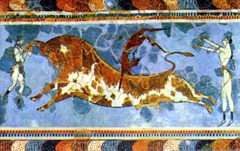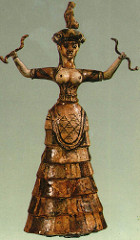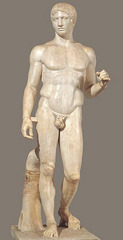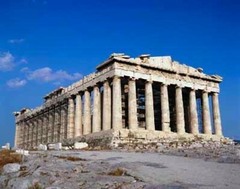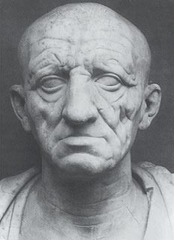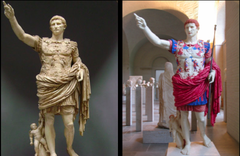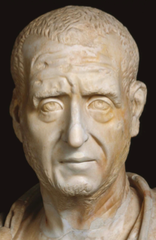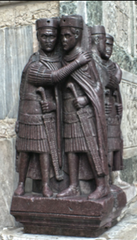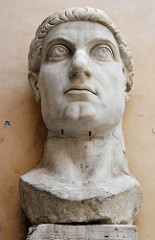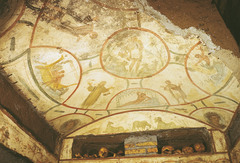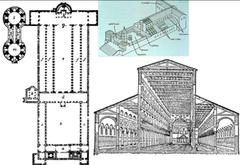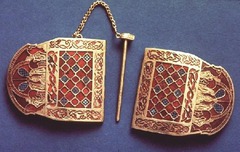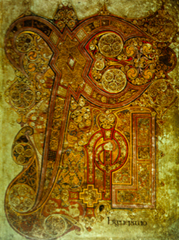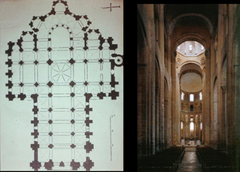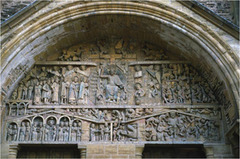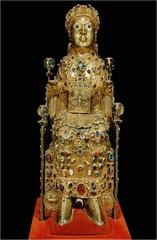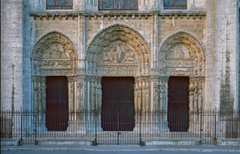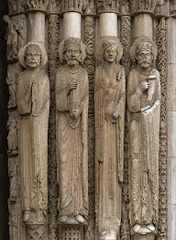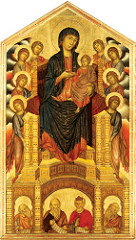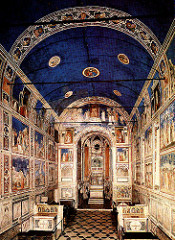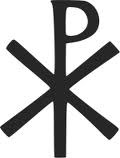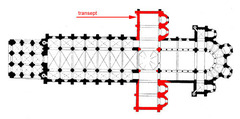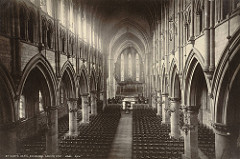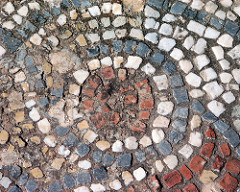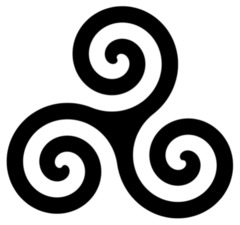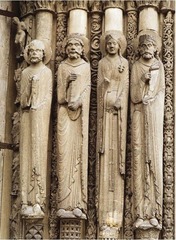Bull Leaping, from the palace complex at Knossos, Crete, c. 1500-1450 BCE, fresco
(Minoan Art)
Woman or Goddess with Snakes, from the palace complex at Knossos, c. 1600 BCE, faïence (Minoan Art)
West Pediment of the Temple of Zeus at Olympia, 470-56 BCE (Classical Greek Art)
Polykleitos, Doryphoros, marble copy of a bronze original of c. 440 BCE (Classical Greek Art)
Kallikrates and Iktinos with sculptural program by Phidias, Parthenon, Acropolis, Athens, 447-432 BCE, marble (Classical Greek Art)
Portrait of a Man, Republican Rome, 1st c. BCE, marble (Late Republican Roman Art)
Augustus of Primaporta, early 1st c. CE, marble copy of bronze statue of c. 20 BCE
(Imperial Roman or Augustan Art)
Decius, 249-251, Late Roman (Late Roman Art)
The Tetrarchs, 300 CE, porphyry, Late Roman Art (Late Roman Art)
Constantine the Great, 325-326 CE, marble, installed in the Basilica of Maxentius and Constantine, Rome, Late Roman Art (Late Roman Art)
Remember Full Body
Exterior, plan and interior, Pantheon, Rome, 118-128 CE (commissioned by Emperor Hadrian) (Imperial Roman Art)
The Good Shepherd, Orants, and the Jonah Story, Ceiling Painting,
Catacomb of SS. Pietro and Marcellino, late 3rd/early 4th c. CE, Rome (Early Christian Art)
Reconstruction of plan, interior and exterior of Old St. Peter's, commissioned by Constantine, Rome, 320-327 (Early Christian Architecture)
Anthemius of Tralles and Isidorus of Miletus, exterior, plan and interior of Hagia Sophia, Constantinople, 532-537 CE (Early Byzantine Art)
Shoulder Clasp, from the Sutton Hoo Ship Burial, England, 7th century CE, gold, granet, milldfiori (Migration Art or Anglo-Saxon Art)
Chi Rho Iota Page from the Book of Kells, c. 800 CE, manuscript illumination
(Hiberno-Saxon Art)
Plan and interior of Sainte-Foy, Conques, France, c. 1050-1120 (Romanesque Art)
Last Judgment Tympanum, Sainte-Foy, Conques, France, 12th century, limestone (Romanesque Art)
Reliquary Statue of Sainte Foy, Conques, France, late 10th-11th century, gold and gemstones over a wooden core (Romanesque Art)
Exterior, interior and plan of Chartres Cathedral, France, 1194-1230 (west façade begun c. 1134) (High Gothic Architecture)
Royal Portal, West Façade, Chartres Cathedral, b. 1134, France, limestone (Early Gothic Art)
Statue Columns, Royal Portal, West Façade, Chartres Cathedral, b. 1134, France, limestone (Early Gothic Art)
St. Theodore, South Transept Portal, Chartres Cathedral, 1230-1235, France, limestone
(High Gothic Art)
Cimabue (Cenni di Peppo), Madonna in Majesty (Maestà), tempera on panel, 1285-86
(Early Renaissance Art)
Giotto, Arena Chapel (Scrovegni Chapel), Padua, 1300 - dedicated 1305 (Lamentation, in particular), fresco (Early Renaissance Art)
Giotto, Arena Chapel (Scrovegni Chapel), Padua, 1300 - dedicated 1305 (Lamentation, in particular), fresco (Early Renaissance Art)
buon fresco
Italian for "true fresco", pigments are applied to wet plaster
fresco secco
paints (tempura-egg/egg with water) applied to dry plaster
faience
glazed and fired twice, makes it expensive and time consuming (Example: Goddess with Snakes)
sacral knot
symbol of holiness on human figures or cult-objects, double-axe can be compared with the Egyptian ankh (eternal life)
contrapposto
Italian for "counterpose" describe a human figure standing with most of its weight on one foot so that its shoulders and arms twist off-axis from the hips and legs (Polykleitos'/David)
canon of Polykleitos
theoretical work that discusses ideal mathematical proportions for the parts of the human body and proposes for sculpture of the human figure a dynamic counterbalance—between the relaxed and tensed body parts and between the directions in which the parts move (based on a ratio of units and the length of various body parts)
pediment
triangular place under the roof of a Greek Temple --he triangular upper part of the front of a building in classical style, typically surmounting a portico of columns
veristic
extremely or strictly naturalistic- "warts and all" shows the imperfections of the subject, such as warts, wrinkles and furrows, minuscule details of the human head, avours wrinkles, furrows, signs of age as indicaters of gravity and authority
idealized
Regarded or treated as ideal, or made or envisioned as ideal, preconception of ideal form or type, perfect
adlocutio (orator's) pose
outstretched hand of speech as well as the contrapposto pose with the weight clearly shifted to one leg, shown as leader, addressing the troops
tetrachy
3-man rule established by Emperor Diocletion in the Late Empire during the crisis of rule
porphyry
an extremely hard, durable reddish stone that resembles marble, is expensive to quarry, comes mainly from Egypt and has imperial connotations (The Tetrachs)
lauratron
sculpture that symbolizes imperial presence in a basilica without which business could not be legally conducted in the emperor's absence (Example: Constantine The Great)
hieractic
Pose is direct, frontal, symmetrical, and large in scale, and therefore signifies power (Example: BLANK)
pozzolana (volcanic stone)
ancient "concrete" made of volcanic ash and lime
oculus
round opening, as in the center of the dome (vault) of the Pantheon
chi rho
the name of the first two letters of the greek word for Christ=XPIΣTOΣ=earliest christogram for Christ
orants
pious figures praying
narthex
an antechamber, porch, or distinct area at the western entrance of some early Christian churches, separated off by a railing and used by catechumens, penitents, etc. --architectural element typical of early Christian and Byzantine basilicas and churches consisting of the entrance or lobby area, located at the west end of the nave, opposite the church's main altar
transept
is a transverse section, of any building, which lies across the main body of the building. In churches, a transept is an area set crosswise to the nave in a cruciform ("cross-shaped") building in Romanesque and Gothic Christian church architecture
clerestory
a portion of an interior rising above adjacent rooftops and having windows admitting daylight to the interior
tesserae(ae?)
is an individual tile, usually formed in the shape of a cube, used in creating a mosaic
pendentive
curving triangular structural element which acts as a transitional device between the base of the dome that is round and four piers (surrounded by a square space) that support it below
Neoplatonism
A Greek philosophy adopted by a Christian Theologian in the 6th century and applied to christianity in the East. As a mystical philosophy, organized all matter and all beings into a rigid hierarchy with God at the top in pure light and matter at the bottom in total darkness. Humans could achieve a spiritual union with God through several means, one of which was meditation facilitated by the arts. (Only when a worshipper ceased to concentrate on the material world would he/she make contact with God.)
Sutton Hoo
Anglo-Saxon burial mounds in Suffolk, England, undisturbed ship burial, along with many other artifacts
animal style
approach to decoration characterized by its emphasis on animal motifs
cloisonné
technique in which metal fillets are turned on end and soldered to a flat surface and then filled in with enamel or gems. The cells are called cloisons.
millefiori
Bundled rods of enamel are fired, cooled and then cut crosswise to form pieces that are set into cells or cloisons
La Tène style
Ancient Celtic style of beautifully interwoven, curvy and usually symmetrical designs and patterns that include:
-pelta(ae):
-triskele:
-trumpet curves
pelta(ae)
An ancient semi-circular shield shape that commonly features in Roman mosaics. Modified pelta shapes can interlock into a tessellating pattern, for which contrasting colours may be used. The plural is "peltae"
triskele
triple spiral, complex Celtic symbol
Pilgrimage-type churches
nave, side aisles, transept and apse with radiating chapels. An ambulatory within the apse connected the inner aisles. Vaults are used with interior bay articulations. The interior spatial design of these churches is "readable" from the exterior,
eschatological
relating to the end of world
tympanum
semi-circular or triangular decorative wall surface over an entrance, bounded by a lintel and arch. It often contains sculpture or other imagery or ornaments
flying buttress
Flying buttresses are another character-defining feature of medieval Gothic cathedrals. A flying buttress is made up of two parts: the buttress, a large masonry block; and the "flyer," an arch spanning between the buttress and the exterior wall
quadripartite vaults
a rib vault which is divided into four sections by two diagonal ribs
Statue columns
a figure that fuctions as a supporting column
Aristotelianism
harmony and logic, scholasticism--medieval philosophy of method of how one learns
Renaissance
Centrality of everything that steam from concept of human being
altarpiece
a work of art, especially a painting on wood, set above and behind an altar
fresco
is a technique of mural painting executed upon freshly-laid, or wet lime plaster. Water is used as the vehicle for the pigment to merge with the plaster, and with the setting of the plaster, the painting becomes an integral part of the wall
city-state
a city that with its surrounding territory forms an independent state
allegory
a story, poem, or picture that can be interpreted to reveal a hidden meaning, typically a moral or political one
